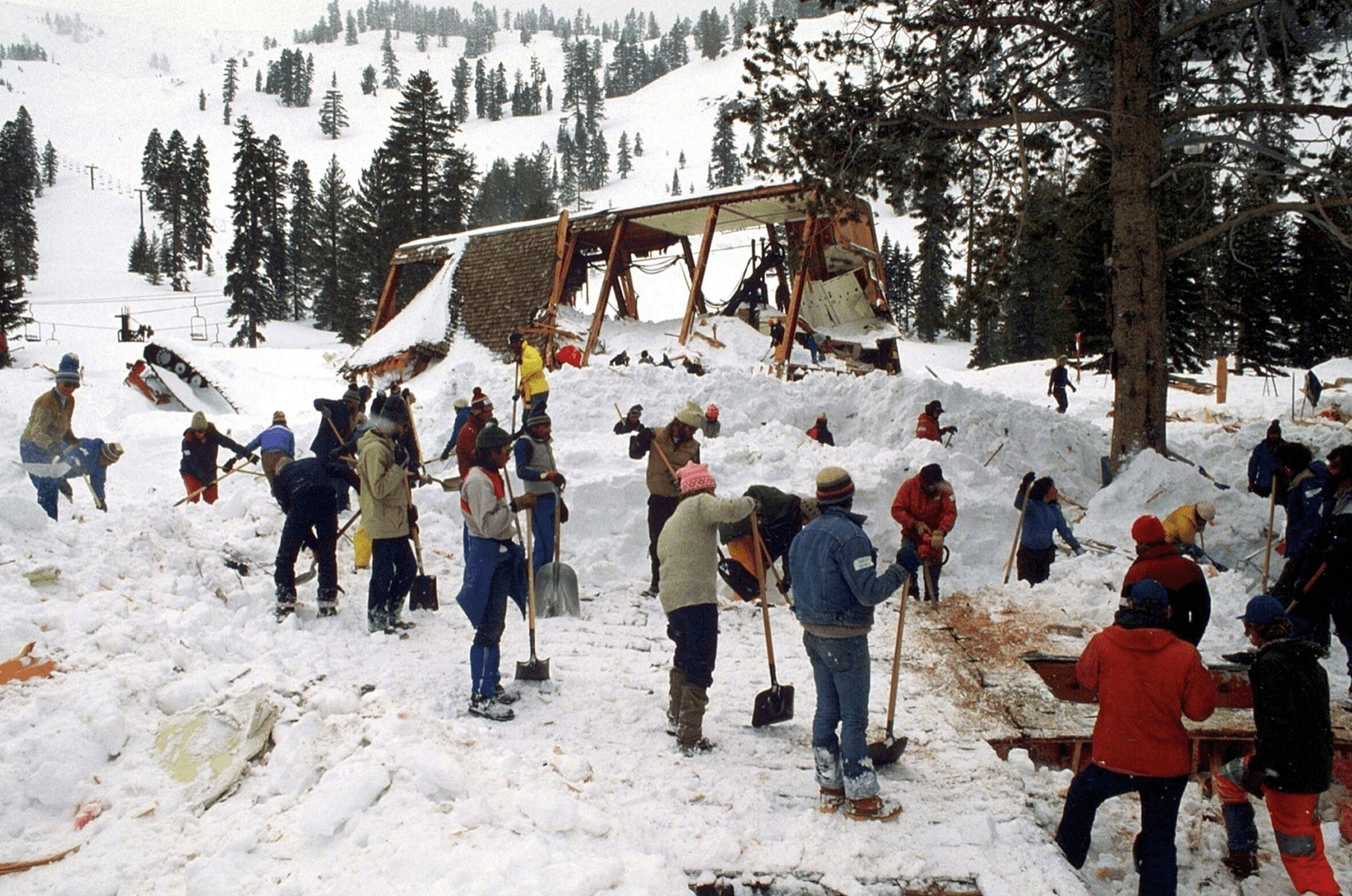
Forty years ago, on March 31st, 1982, a deadly avalanche ripped through Alpine Meadows Ski Area in California. The catastrophic slide was unlike any the area had seen. It buried dozens, taking seven lives and causing millions of dollars worth of damages to the resort.
March 27th, 1982, the storm rolled in. Snow dumped for days as patrollers fought to control the thousands of acres of terrain that make up the resort. Known for its steep chutes and bowls, Alpine Meadows’s extreme terrain is what makes it unique. The resort is classified as a “Class A” area, meaning it has a high potential for avalanches. 1982 was a heavy season for the area, with a base of 87 inches and an additional 90 inches falling over four days.
Patrollers spent hours trudging through the pounding wind and white-out conditions working to blast chutes and combat slides. Using a combination of hand-thrown dynamite and military-grade howitzers, they blasted the same areas multiple times a day. After three days of relentless snowfall and 100mph winds, Manager Bernie Kingery closed the resort to the public. It was impossible to open lifts with winds of 100mph and upwards. Patrollers continued blasting.
Just eight hours before disaster struck and nearly four days since the start of the storm, the morning of March 31st, 1982, nearly 90 inches of snow had accumulated. The resort remained closed with no end in sight blizzard conditions, and high winds continued. Most staff left the premises except a few in the main lodge and terminal at the Summit Chair.
At 3:45 pm, a voice rang over the radio: “Avalanche!”
The voice of Jake Smith, a patroller at Alpine Meadows. He was heading back to the resort on his snowmobile after using the neighboring resort, Squaw Valley’s (now Palisades Tahoe) KT-22 chair, to bomb over the ridge into Alpine Meadows. Driving through the parking lot, he was the first to alert the others of the incoming wall of white.
It was then that the side of the mountain came alive as a sea of snow broke free of the chutes it had been clinging to for the past four days. Originating on a high steep in the northeastern part of the area, the 3,200 foot long slide departed the Poma Rocks, Buttress, and Don’s Nose terrain. Gaining speed, covering 700 vertical feet in seconds, it hurled towards the base.
Anything in its path was consumed. Full-grown trees snapped like twigs. It completely pummeled the main lift terminal, Summit Chair, and engulfed the main lodge, which housed the ski patrol shack and ski school. Snowcats and snowmobiles parked at the bottom were gone instantly, and two other lifts faced significant damage.
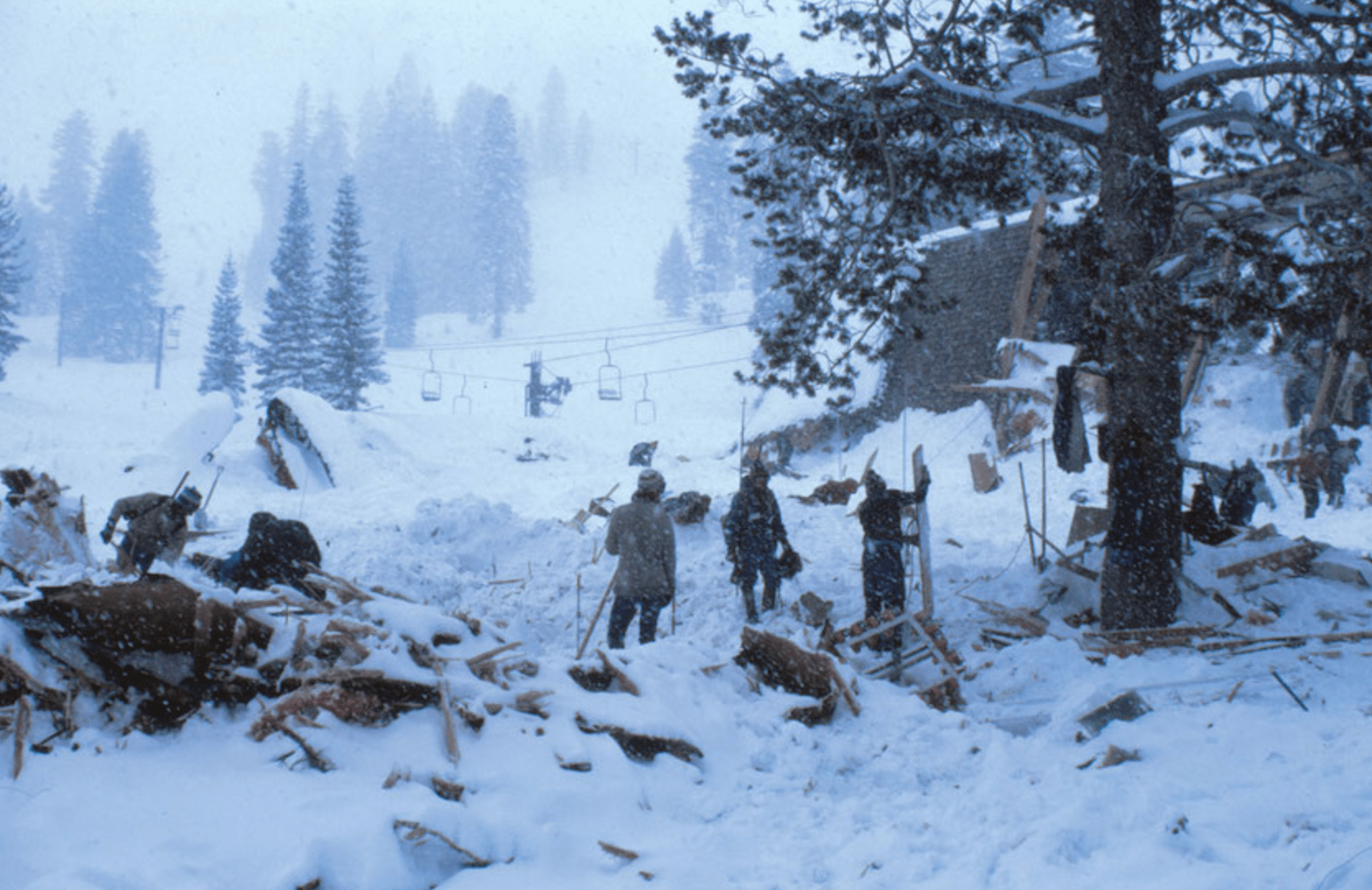
His co-worker Tad Defelice was buried next to him. He also freed his head and arms as he dug himself out. They quickly went to work searching for survivors and uncovered Jeff Skover, another co-worker not far from them.
It wasn’t long before search and rescue teams were alerted of the slide. Rescue teams of 150 people swarmed the area and began searching for survivors. They worked tirelessly digging and probing through ice chunks, mounds of snow, and rubble. With the avalanche plowing through so many obstacles on its way through the area, the amount of rubble and debris made locating victims extra challenging.
Among those buried were three out-of-towners. Dr. Leroy Nelson, his daughter, and David Hahn. After being stuck at their vacation rental for the past four days, they decided to weather the storm and get out. They had been making their way through the blizzard in hopes of finding a restaurant open at the base of the area. Before they knew it, they had been buried under the ten feet of snow that covered the parking lot.
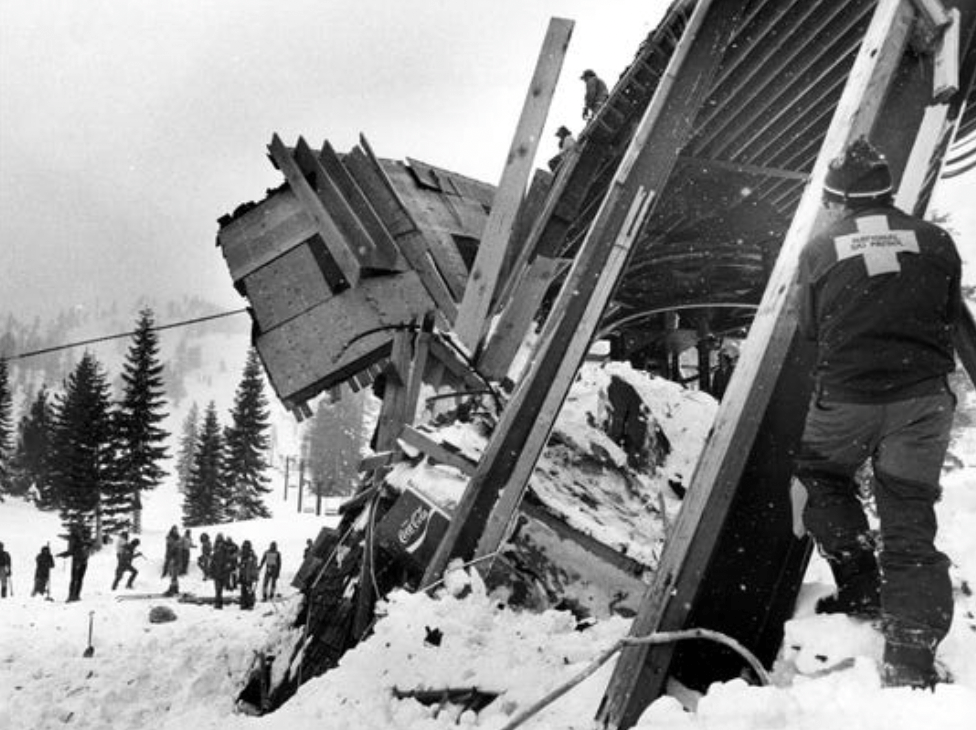
Bernie Kingery, the manager at the resort, had been in the main lodge at the time of the slide’s impact. He was buried along with the others but unfortunately did not make it.
Smith, who had alerted the others at the time of the slide just before being engulfed himself, was found hours later. It took 35 minutes to dig him out. He is remembered now with a peak on Tahoe’s West Shore named after him. A popular destination for backcountry skiers, the name fits Jake Smith’s legacy, and his love of Tahoe can continue.
It was beginning to look hopeless for Search and Rescue. After searching for days without finding any survivors, rescue teams were exhausted. Finally, as the relentless weather finally began to subside, a team member’s rescue dog turned their attention to the area where the main lodge had been. Teams moved their focus here in hopes of finding something.
On April 5th, 1982, five days after the avalanche wreaked havoc at Alpine Meadows, Anna Conrad was found. She had been in the employee locker rooms with her boyfriend at the time of the slide. When it consumed the building, she was forced under a bench, and a wall fell over the top of her, providing just enough room for her to lie in. She survived for five days by eating snow and mud, hoping rescue teams would find her. Unfortunately, Frank Yeatman, her boyfriend at the time, did not make it.
“I did a lot of sleeping and thinking about friends. I just kept telling myself I could do it, I could do it. They’d find me,” Conrad said in an interview.
The rescue dog, Bridget, who had found her location, became the first search and rescue dog in North America to find a human victim in an avalanche. She proved how beneficial having trained rescue dogs on a response team could be.
Anna spent the next few months in the hospital after losing a portion of her right leg and the toes on her left foot to frostbite. She was soon skiing again that December. Anna continues to work in the community, teaching about avalanche safety and working as an ambassador at Mammoth.
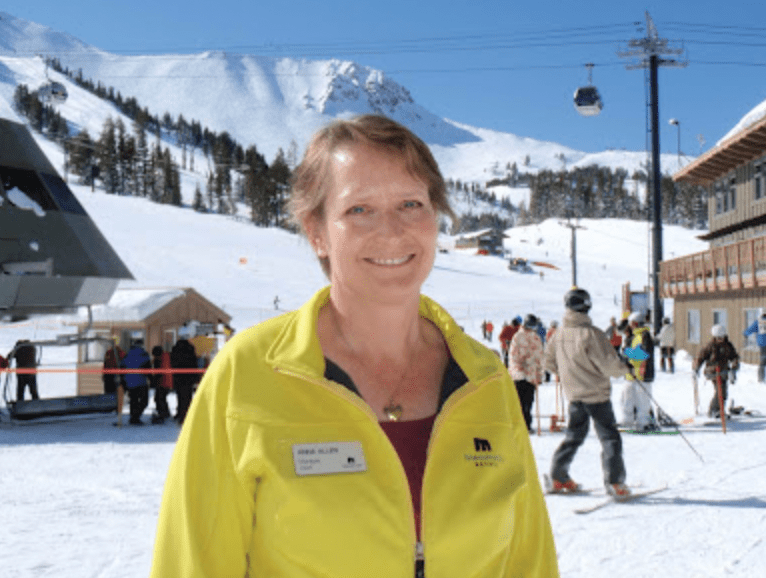
March 31st, 1982, was a day the community of Tahoe will forever remember. It remains an important event because of its impact on the industry. Snow scientists and avalanche forecasters continue to study this natural disaster.
Alpine Meadows Ski Patrol had done everything to mitigate avalanches throughout the storm. They followed each protocol. After months of hearings and studying the events leading up to the slide, the area was found not guilty of negligence.
The 1982 Avalanche at Alpine Meadows is a reminder that Mother Nature is a force of its own. No matter how much blasting, she can not be tamed. The incident remains sewn into the fabric of the Lake Tahoe community. It serves as a reminder to remember that we are temporary, and these mountains will be here long after.
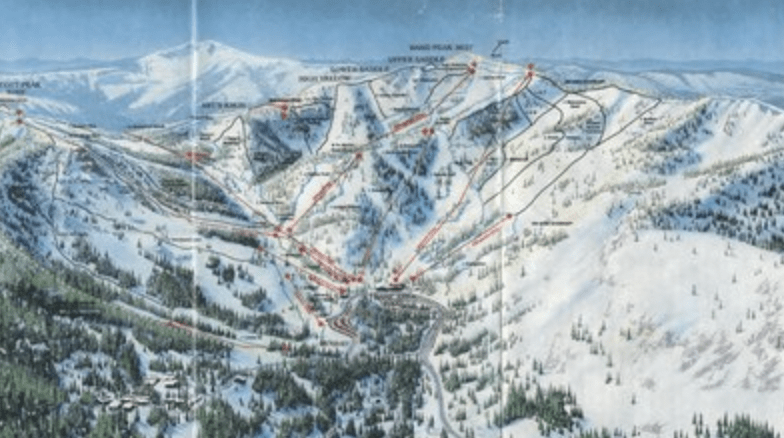
I was there, snowed so much we stayed inside most of the week and gambled in Incline.
Crazy week.
Bernie was in the locker room/patrol building/lift counterweight building a hundred feet or so from the main lodge. Anna was found in the locker room on the lower level of that building, not the main lodge. The main lodge was damaged, but the fatalities and injured persons were in the separate locker/patrol/lift building.